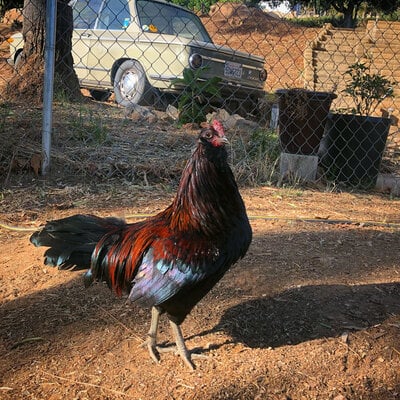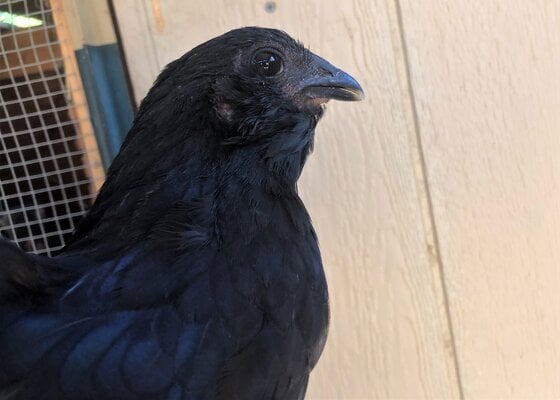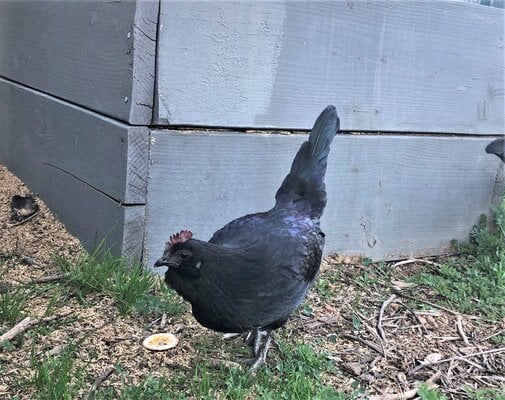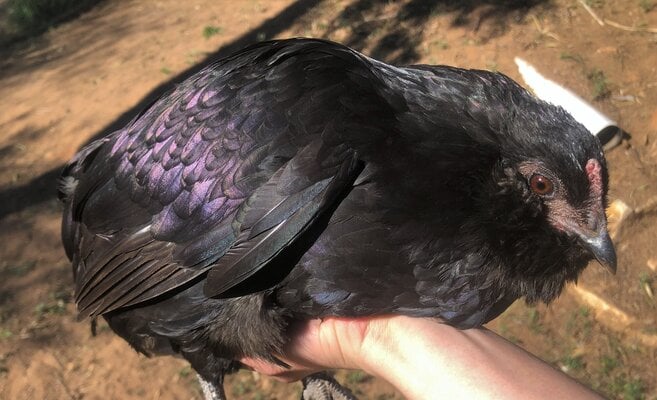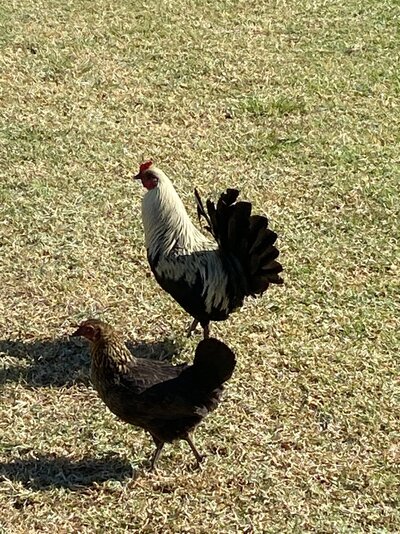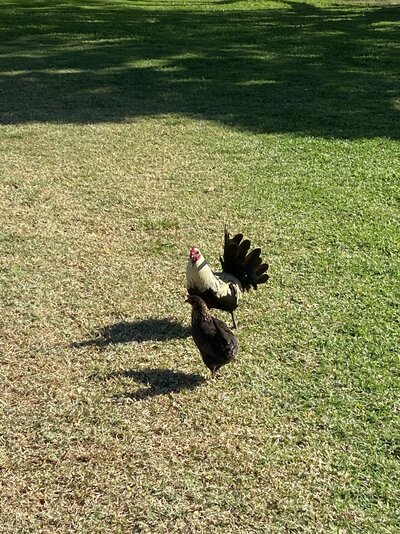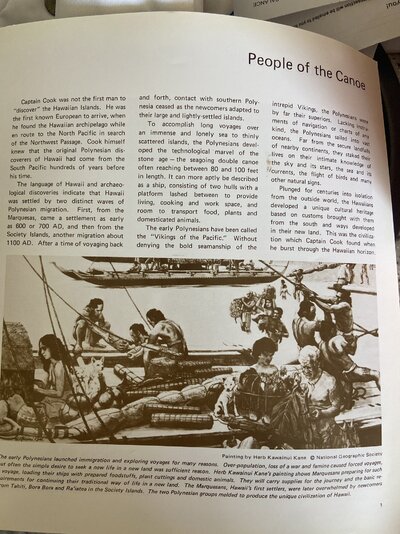Ponape are a type of chicken under the category of Rapanui Fowl and are from the Micronesian island of Pohnpei. These unique chickens arrived to the island on the vessels of ancient Polynesian seafarers. Foundry stock from Pohnpei and other islands were brought back to Europe during the colonial period and have found their way into some of the genepools still maintained today, one of the examples being Dutch Bantam breeds.
As a landrace fowl there is a fair amount of diversity within the genepool of Ponape. They are typically the size of a larger bantam and most often sport beard-muffs, some individuals will also have feathered feet. The plumage of roosters is most often silver, gold, or red birchen but can also be variations of the duckwing pattern. Shank color ranges within nearly all known colors and hens can have spurs. Comb type varies and is most often a small single comb or a pea comb. Some Ponape have melanized faces and can even display fibromelanosis, though I have not had any fibro individuals in my lines. The hens lay small to medium sized eggs that are tinted to almost white.
Ponape are also very intelligent and are not prone to disease and do not make easy prey for predators. They are good fliers, the males are great protectors, and the females are fantastic mothers. These fowl descend in part from Ayam Bekisars and therefor have more green junglefowl genetics than many other lineages. Their plumage can be very violaceous and display more purple-blue iridescence as a result.

Silver Birchen Ponape Male

Red Birchen Male displaying vivid Iridescence


Black birchen hens


Silver duckwing hens


Red duckwing hens

Hen displaying violaceous iridescence

Ponape eggs
As a landrace fowl there is a fair amount of diversity within the genepool of Ponape. They are typically the size of a larger bantam and most often sport beard-muffs, some individuals will also have feathered feet. The plumage of roosters is most often silver, gold, or red birchen but can also be variations of the duckwing pattern. Shank color ranges within nearly all known colors and hens can have spurs. Comb type varies and is most often a small single comb or a pea comb. Some Ponape have melanized faces and can even display fibromelanosis, though I have not had any fibro individuals in my lines. The hens lay small to medium sized eggs that are tinted to almost white.
Ponape are also very intelligent and are not prone to disease and do not make easy prey for predators. They are good fliers, the males are great protectors, and the females are fantastic mothers. These fowl descend in part from Ayam Bekisars and therefor have more green junglefowl genetics than many other lineages. Their plumage can be very violaceous and display more purple-blue iridescence as a result.
Silver Birchen Ponape Male
Red Birchen Male displaying vivid Iridescence
Black birchen hens
Silver duckwing hens
Red duckwing hens
Hen displaying violaceous iridescence
Ponape eggs

